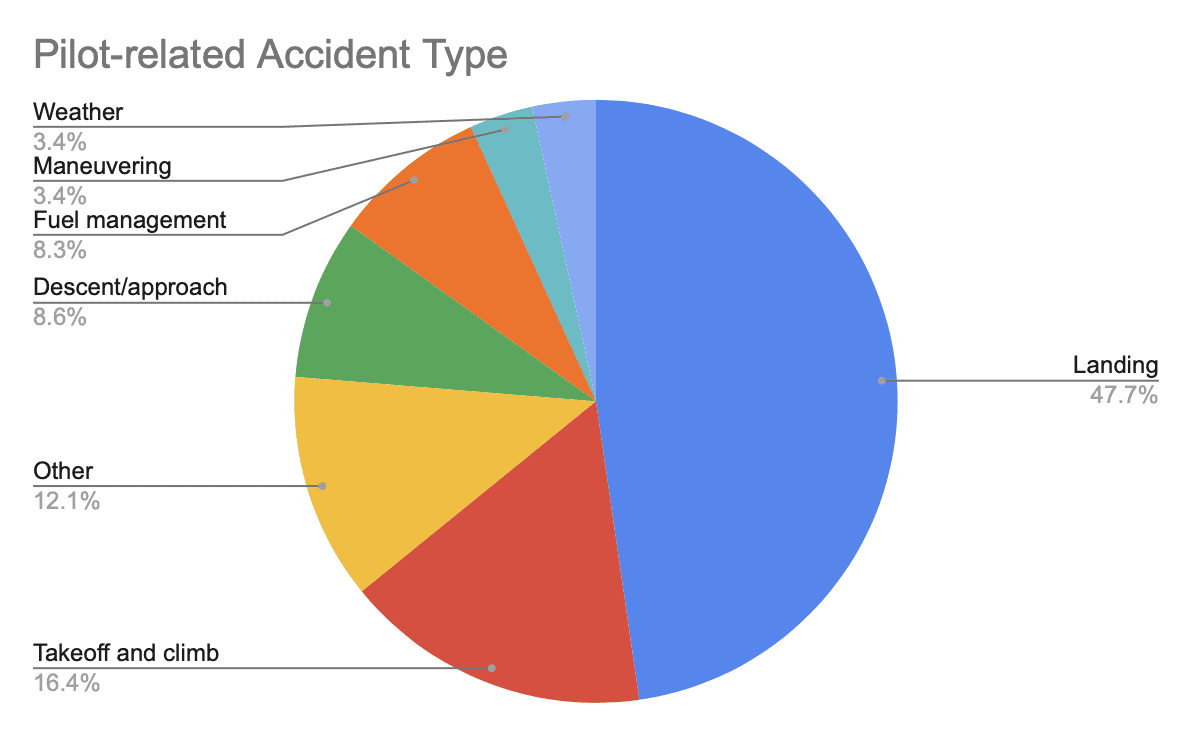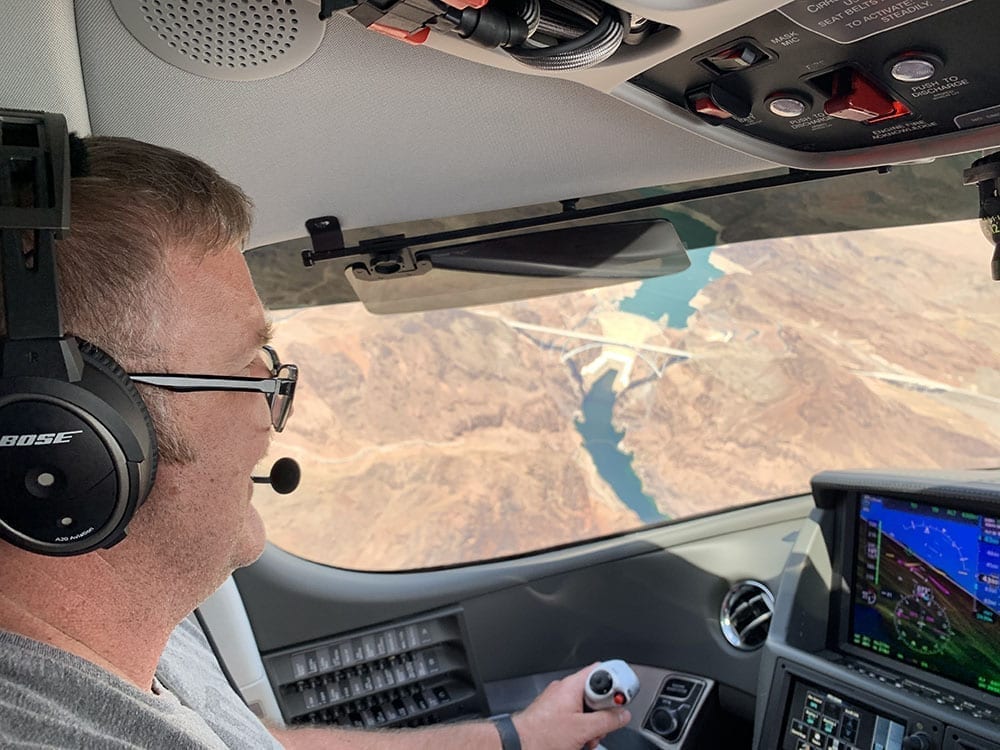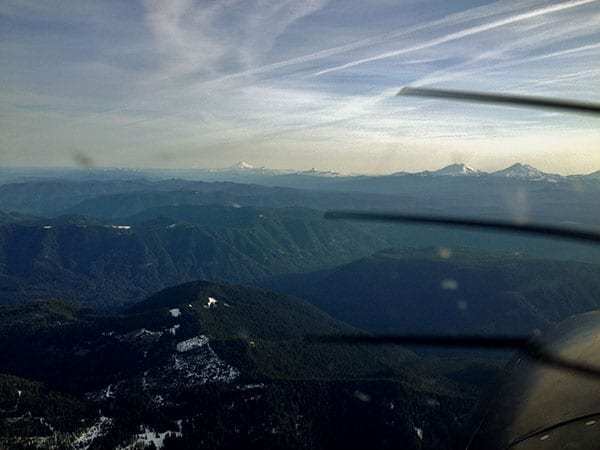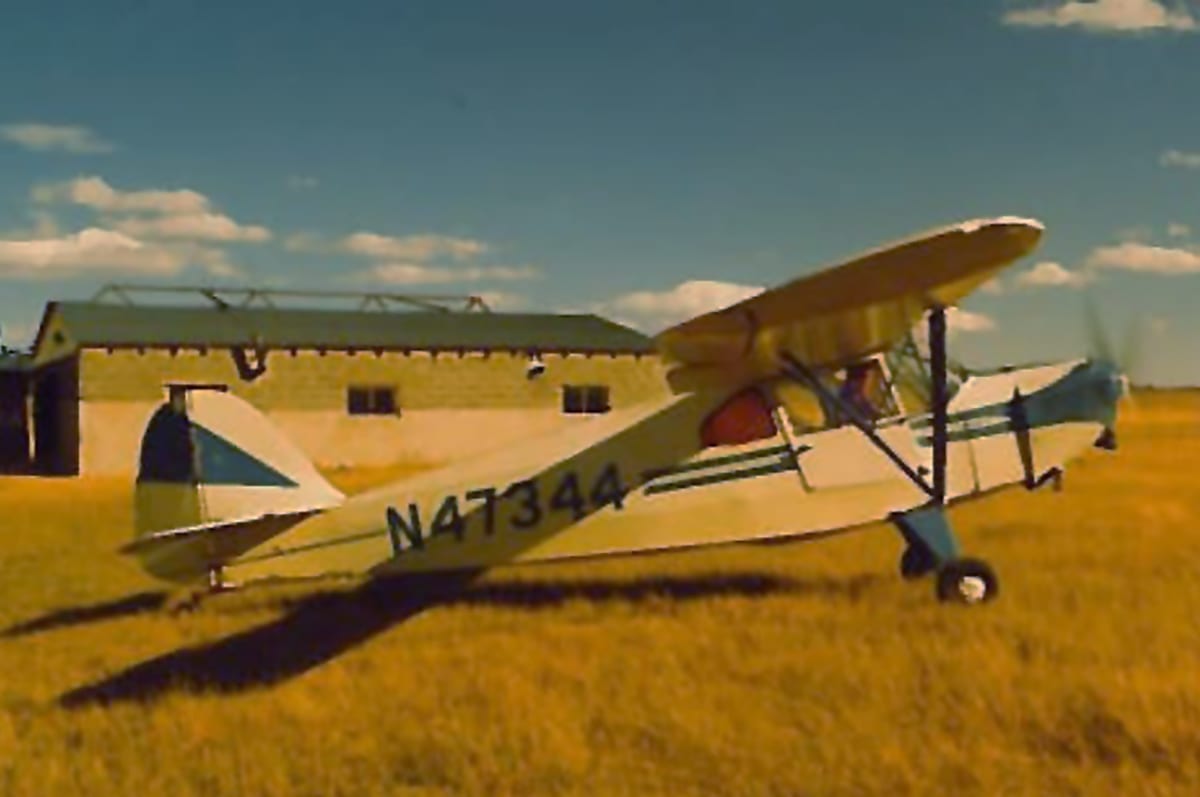
GA safety trends: what should we worry about?
John's blogFAA regulations are written in blood, according to the cliche, but it doesn’t seem like flight training reacts to accidents quite so consistently. That’s a mistake. While being a good pilot means more than just avoiding an accident, that goal is certainly a good place to start. That mindset is what makes accident statistics so valuable for general aviation, and the recently released Nall Report from the AOPA Air Safety Institute is a gold mine.

Friday Photo: under the bridge
Friday PhotoThe mission on this day was to get out of the house (pandemic blues) and shoot some practice instrument approaches in typical August hot, humid southeastern Virginia weather. The pilots were rewarded with an interesting sight, as a US Navy ship was passing through the York River Coleman Bridge.

Charles Lindbergh flies virus serum to Quebec
HistoryWhatever his personal flaws and shortcomings, there are some traits of Lindbergh’s that have never been questioned: he was a brave, distinguished, and incredibly capable aviator. These characteristics were on full display on April 24, 1928, when Lindbergh flew anti-virus pneumonia serum to Quebec City, Canada, in an attempt to save the life of his aviator friend, Floyd Bennett, who was desperately ill.

What I did today—first solo at 60 years old
I was thereLast April, one month before my 60th birthday, I began taking flight lessons. My family gave me the go ahead and my wife, Meredith, in particular made it possible for me to do this. It’s been an interesting experience.

Racing to Columbus
I was thereApproach handed me off to OSU tower, and the clouds over the airfield were now a roiling olive green. I was number one for the airfield and cleared to land; number two was a cabin class twin. I was committed to landing. The twin broke off the approach after the first lightning strike on the airfield, but not me.

Leaving Las Vegas with Cirrus Jet time in the logbook
My AdventureIt was late July in the year of Covid that I had the opportunity to do some flying in Las Vegas. I was there for a two day Corvette Owners Driving School in Pahrump that was being heavily subsidized by the folks at GM. I took the opportunity to fly in (commercial) early so that I could do some other things while in town. And by other things I mean flying.

Friday Photo: morning over the Cascades
Friday PhotoI took an early morning summer flight across the Cascades in Oregon on a perfect morning. Unlimited visibility, no wind, an almost eerie lack of any sign of civilization. As I neared the middle of the mountain range, I saw this stunning lineup of (from the left) Mt. Jefferson, Three-Fingered Jack, Mt. Washington, and two of the Three Sisters. A timeless moment that signals the best of the flying experience.

Now do it backwards
I was thereThose familiar with the song and dance teams of the 1940s and 50s are familiar with the comment. Fred Astaire was a master dancer and his partner, Ginger Rogers, did the same routines backwards and in high heels. Well, no high heels here, but an aviation story where doing it backwards was part of the event.

Flying away—two experiences flying outside the US
I was thereThe glider club, like almost every activity in Iran, was supported and controlled by government bureaucracy, often with many nonsensical rules. The rules often seemed to be created to prevent enjoyment or accomplishment. Everything was supplied and controlled by the government.

Go or No Go: above the bumps, below the ice?
Go or No GoFall in Maine is simply wonderful, as you've seen for yourself this week. The air was crisp and the colors on the trees were beautiful, but now it's time to fly home. Your Cessna 310 is fueled up and ready to make the 3.5 hour flight from Bar Harbor (BHB) to your home near Gaithersburg, Maryland (GAI). Will the weather cooperate?

Icing diversions—an overlooked threat
TechniqueIn a study of icing accidents that I presented as a paper for the American Institute of Astronautics and Aeronautics in 2006, I identified 142 events in which the pilot made the decision to land due to ice accumulation; in 84 of these, the decision was made before any aerodynamic consequences had been encountered. In only 23 of these 142 cases was a successful precautionary landing made.

Friday Photo: sunrise over Virginia
Friday PhotoEarly morning always reminds me of a fresh start, a new day, and a chance to learn and gain experience(s) as a pilot. While crawling out of bed seems less than desirable at 0500, views like this are rare, priceless, and worth every effort to capture aviation moments in time like this.

Assumptions can be dangerous in the air
OpinionIn flight, assumptions are the Achilles heel in safety. One cannot press on with the assumption that all is well, when a crushing burden of mounting evidence is screaming against further pursuit. The fallacy of not knowing the unknowns ahead leads one to despair.

Does ATC care if you see traffic on your iPad?
I was therePrior to the Stratux, amidst that constant barrage of traffic alerts, it was often difficult to locate the converging “bogie” reported by ATC, necessitating a response of “looking for traffic.” Since introducing Stratux to the cockpit however, locating reported traffic in the immediate vicinity of our position seems to be much easier now.

The Return of a Rusty Pilot, Just in Time for a Global Pandemic
I was thereAfter years of accumulated rust in my logbook, a friend and senior mentor at work, who is also CFII, was admiring the Boeing 737 poster hanging in my office one day when he mentioned he knew of a 182 fractional ownership opportunity. The admiration continued for a few more minutes, and a lightbulb clicked.

Should you take your grandchildren flying?
OpinionBoth of our kids were in the backseat of our Mooney 201 headed off to visit one grandmother or the other before they were two weeks old. Stancie and I never really gave it a second thought. But that was 40 years ago. And much has changed—actually, almost everything has changed—when it comes to risk assessment for young children.

Friday Photo: Florida Keys
Friday PhotoWe cancelled IFR west of Boca Raton and descended VFR with flight following to fly the east coast line down to the Keys and out to Marathon. ATC was unbelievable! I was handed off to FLL tower to facilitate flying through their airspace. Traffic was not bad and ADS-B In made others easy to find. Great views the whole way! Just beautiful...

They’re worried, will you search?
I was thereThis is a chronicle of events of a search operation requested by a worried family when their loved one did not arrive from a short instrument flight. I got up on October 6, 2015, to a gloomy, overcast morning. After lunch my cell phone started to vibrate and when I answered it was Jim from the FBO office at the Chadron Airport. He explained that a V-tail Beechcraft had left Chadron for Alliance midmorning and had not arrived.

Not exactly an F-14, but that’s OK
I was thereI had a 1943 Taylorcraft L2-M that I bought from a rancher from Lusk, Wyoming, north of Torrington (where I live), back in 1977. My dad heard about it and we flew up there and went out to the ranch to take a look. The guy actually had it in an open front shed, with nothing but a rope with some rags hanging off it, to keep the animals out. What kind of animals, you ask? Why, buffalo, of course!

High wing or low wing? Ask Mother Nature
OpinionI agonized over this for a very long time before I bought my first airplane. It seems to be one of those endless hangar discussions that divides pilots into one of three camps that almost serves as a form of introduction. And so, “Hi, my name is Dan, I’m a high-wing guy. How about you? Oh, you like low wing aircraft because you can see the numbers as you turn base to final?”
